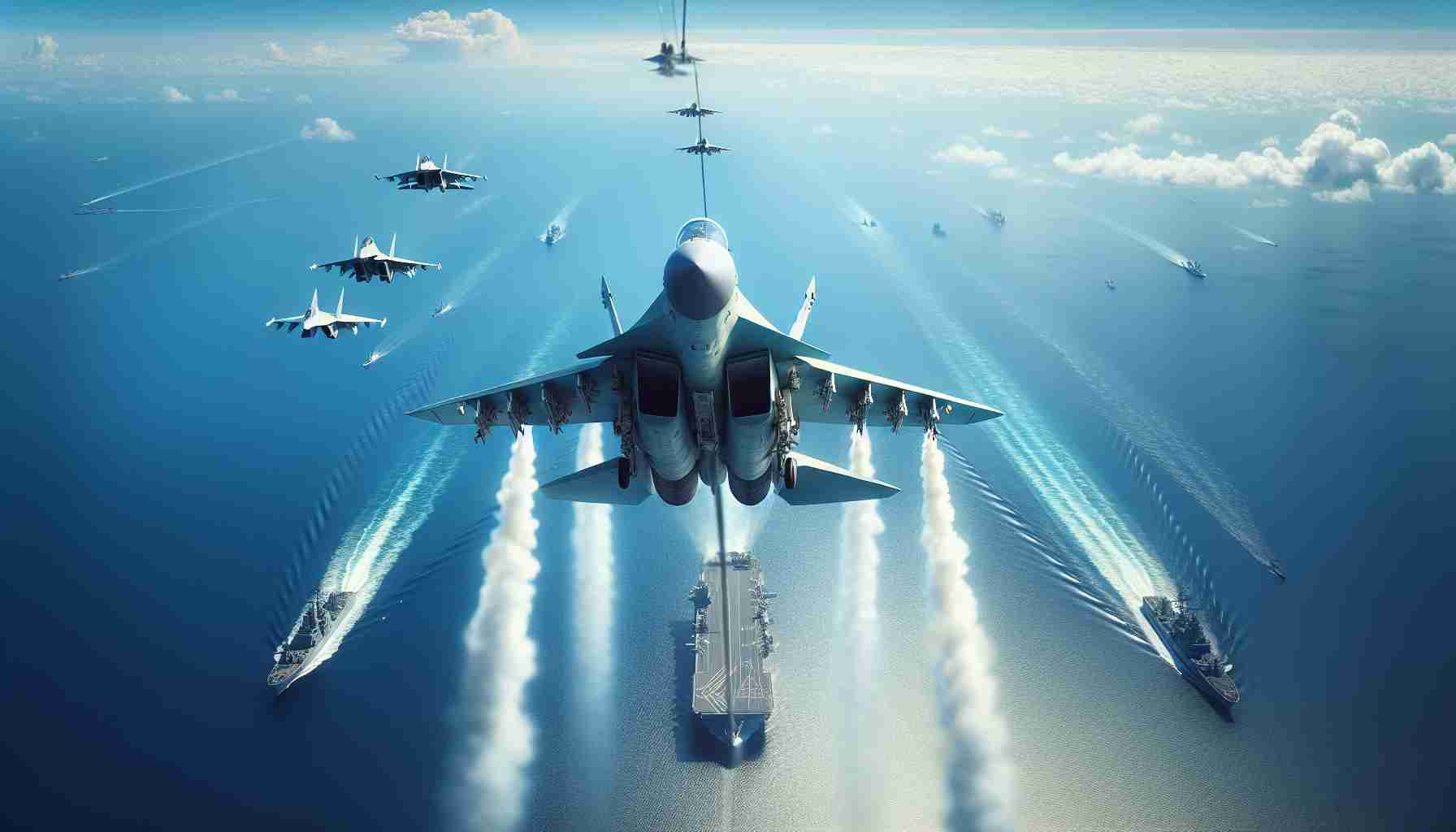In an impressive display of military might, the Chinese navy has showcased a more advanced iteration of its ship-based jet fighter, the J-15, during recent aircraft carrier drills. The exact timing of these exercises remains undisclosed, but the People’s Liberation Army Navy confirmed that this was the first occasion where both of the nation’s aircraft carriers, the Liaoning and the Shandong, conducted operations together in open waters.
These carriers were accompanied by a formidable fleet, including at least 32 J-15 fighter jets. Among them, military aviation analyst Andreas Rupprecht identified that at least nine of the 12 jets seen airborne in released images were of the upgraded J-15B model. This suggests a significant enhancement in the capabilities of China’s naval aviation wing.
Rupprecht, based in Germany, expressed considerable enthusiasm upon seeing the J-15Bs in action, noting this as a significant moment for Chinese military aviation. However, he pointed out a lingering concern: the new J-15Bs are reportedly equipped with the older AL-31F engines. This is despite previous reports indicating that these fighters had tested more advanced domestically produced engines, the WS-10 turbofans.
The recent naval drills signify a milestone in China’s military advancements, demonstrating their commitment to enhancing their aerial combat capabilities and expanding the operational scope of their aircraft carriers.
The J-15B Jet Fighter: A Game Changer or a Missed Opportunity for China?
The unveiling of the J-15B jet fighter during Chinese naval exercises marks a staggering leap forward in the region’s military capabilities. Central to this deployment is the new iteration of the J-15 aircraft, specifically identified as the J-15B. But what do these advancements mean for China’s military, regional tensions, and global military balance?
A Glimpse into the Future of Military Aviation: Fact or Fiction?
The J-15B model, although a significant upgrade from its predecessors, carries with it the shadow of the past. The Chinese military has long touted indigenously developed technology, yet the presence of the older Russian AL-31F engines in these state-of-the-art fighters could spark debates on whether China’s military-industrial complex is keeping pace with its ambitions. These older engines may represent reliability and a proven track record, but they also raise questions about the pace of advancement in China’s domestic engine technology.
Advantages of the J-15B: Strengthening China’s Naval Power
1. Enhanced Capabilities: The upgraded systems onboard the J-15Bs, including avionics and weaponry, significantly boost China’s naval air power.
2. Force Projection: With two operational aircraft carriers now equipped with a robust fleet of these fighters, China can assert a stronger presence in contested areas, such as the South China Sea.
3. Technological Leap: The development of an advanced fighter jet demonstrates China’s growing prowess in military technology, signaling its intentions as a global military player.
Controversies and Challenges: Possible Drawbacks
1. Engine Concerns: The use of older engines contradicts China’s narrative of self-reliance and technological superiority, potentially impacting its credibility.
2. Regional Anxiety: Neighboring countries, particularly those in the South and East China Seas, may view this as an escalation, exacerbating already existing tensions.
3. Economic Burdens: Developing and maintaining advanced military fleets is costly. Such expenditures could strain China’s economy and redirect funds from essential social programs.
Community and International Implications
How do these developments affect communities within and beyond China’s borders? Locally, an enhanced military might ensure a sense of national pride and security, yet it could also incite fear and tension among China’s neighbors. Internationally, countries are watching closely, pondering if China’s advancements necessitate a corresponding response, potentially igniting an arms race.
Strategic Questions: What Lies Ahead?
– Can China sustain its military expansion while addressing its aging engine technology issues? Balancing quality with quantity will be critical for China to maintain its competitive edge.
– How will global powers react to China’s growing military capabilities? Collaborative approaches to regional security could be overshadowed by escalating military posturing.
– Is there a risk of further destabilizing the region? Regional security dynamics are fragile, and any perceived shift in military power could have significant diplomatic repercussions.
The world waits to see how China’s naval growth will shape the future. As China’s military ambitions continue to unfold, it’s clear that their impact will ripple far beyond the waters of the Pacific.
For more information on military advancements and their implications, visit Janes, or explore insights from Global Times.







